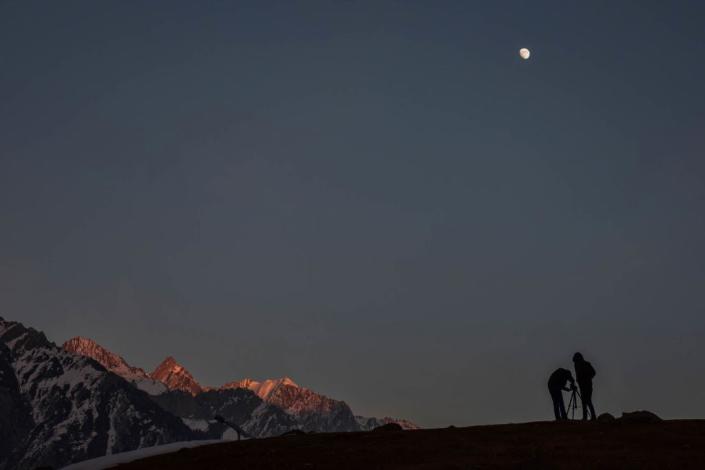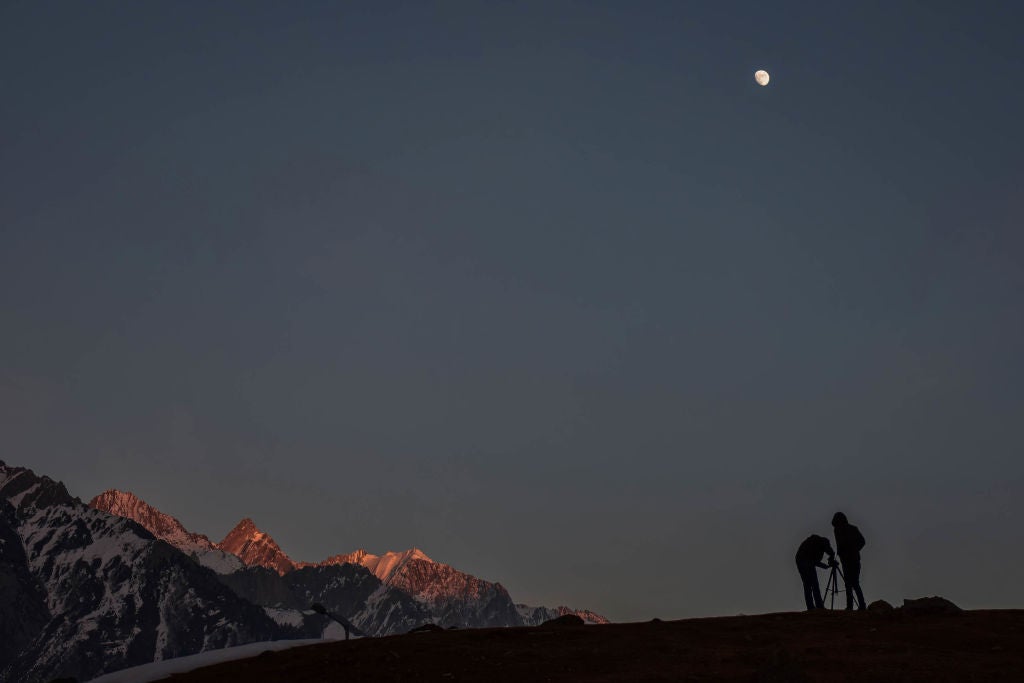[ad_1]
Spotting a shooting star during one of the dozens of meteor showers a year can be a rewarding experience if you’re lucky enough to see the night sky spectacle, but capturing that feeling with a smartphone can involve some skill.
About 30 times a year, the Earth passes through a trail of debris left over from a comet or asteroid. Some of the most well-known meteor showers have been observed for thousands of years. The August-time Perseid meteor shower was first recorded 2,000 years ago in China.
GEMINID METEOR SHOWER PEAK: WHEN AND WHERE YOU CAN SEE IT
These fast and fleeting showers of light can be easy to see with the naked eye as long as you are in a dark location with minimal cloud cover. Capturing the experience using your phone’s camera is also possible with some finesse, according to Pixsy CEO Kain Jones.
Jones shared some astrophotography tips with FOX Weather to help sky gazers capture the elusive meteor shower.

You’ll need to start with a basic setup for success for any night sky photography. You’ll want to be as far away from city lights as possible. To find the best location, check the forecast. Heavy cloud cover can ruin your chances of getting a shot of the moon or a meteor.
“Use a tripod to keep the camera (as) still as possible,” Jones said. “Be in an extremely dark environment, away from any city lights, away from any lampposts, car lights. You don’t want any extra light to flood into the lens.”
Jones said using a timer can also help avoid any blurry images.
7 TIPS ON HOW TO PHOTOGRAPH THE MOON
“Keep the phone very still,” he said. “Start a timer so you don’t have to touch it. Set it for 5 seconds, walk back, stay very still, and really let that exposure run for as long as possible.”
Astrophotography exposures can run between 5 and 30 seconds, depending on what you want to capture.
Jones also recommends getting in a few practice shots in a nighttime setting before your meteor shower or astronomy event.
The number of camera lenses and settings has increased with each version of the iPhone. The best addition for astrophotography was the low-light photography and RAW file format, Jones said.
The Apple iPhone 13 Pro Max and iPhone 14 Pro have a night mode for low-light photography, which simulates a slow shutter speed, allowing more light in. Users can also opt to shoot photos in RAW file format, which captures the uncompressed image data allowing for more detail in your photos.
“Those will capture every single pixel and piece of data, which can be really useful for editing later on,” Jones said.
The Apple iPhone 11 Pro and later have a night mode.
According to Pixsy, the Samsung Galaxy S21 Pro and Ultra include several lenses best for taking sharp images.
The Ultra 108-megapixel sensor is best for low-light conditions. The Pro doesn’t have the same processing power, but the bright night mode can take good nighttime images.
Samsung breaks down the shutter speed and ISO settings you need to capture stars, the moon and the Milk Way in this guide. Most require a low shutter speed of up to 30 seconds and high ISO.
The Google Pixel 6 Pro comes with three lenses and a low-light mode called Night Sight. The “Motion” mode is suitable for long exposures if you are trying to capture multiple shooting stars during a peak meteor shower event.
Night Sight is available on Pixel 4a and newer phones.
On the Pixel 4 and later, you can capture time-lapse night sky photos.
Open the camera app and tap Night Sight. When your phone is stable on a tripod or other surface, it will display an “astrophotography on” message. When you are done, hit “stop.”
Many photography apps offer more flexibility if your phone can’t adjust exposure and shutter speed.
Most popular apps require a small payment between $2.99 to $25 a year to unleash the full potential and settings.
NightCap is designed with astrophotography and low-light situations in mind.
For $2.99, the app allows you to create long exposures and adjust the ISO and F stop. It even has settings to capture shooting stars, the moon and human-made objects in space, including the International Space Station.
After working so hard to capture the night sky, you want to ensure no one grabs your image off social media and claims it as their own.
Pixsy uses reverse image search technology that monitors images across social media and websites to find where your photos end up.
This technology can be helpful to amateur photographers, professionals or even parents who want to protect images of their children.
“We have plane geeks. We have space geeks. We have astrophotographers. Yeah, we have miniature photographers, flower photographers, medical photographers,” Jones said. “It’s quite interesting when you get into all the different sort of niches of these sort of subsets of photographers.”
Jones estimates there are 7 trillion images on the internet, and it’s just impossible for someone to look everywhere to track their pictures online.
“It’s a crazy amount, and only really this technology can kind of help keep track of where it’s all being used,” Jones said.
[ad_2]
